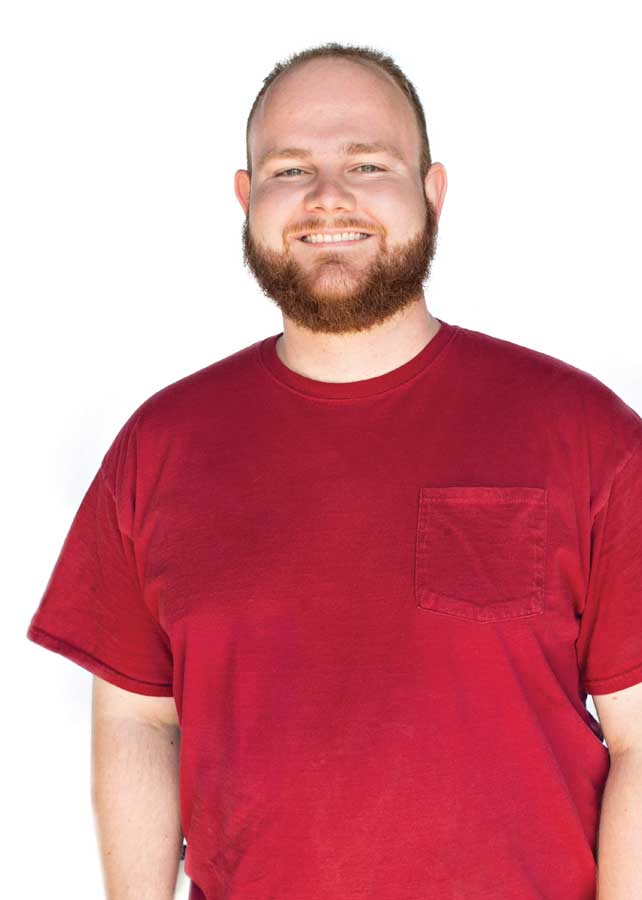James manages the wine grape crops on the family’s estate in the White Bluffs region of central Washington. He works alongside his brother John, and parents, Bob and Crista Whitelatch.
grower / Pasco, Washington
age / 28
crops / Wine gapes
business / Owner of RC Farms and Claar Cellars
 What was your path to farming?
What was your path to farming?
Growing up, I have a lot of memories working with my dad, like when my brother and I would take naps in the cab of the swather when he was cutting alfalfa. Originally, I started around the time there was a big push with our apples to get GAP certified. So I started with collecting information to submit to the packing shed on nights and weekends after attending classes at Columbia Basin College. When we started looking into LIVE certification for the wine grapes … I got more involved, spearheading those changes. Now it’s a full-time job.
What projects are you taking on in the future?
There’s so much coming out in the industry right now. People are starting to use drones to more accurately gauge water stress and nutrient deficiencies. I’m just learning about new technologies that are coming to solve problems of overuse of pesticides, workforce problems, and what we can do to become mechanized. From prepruning, hedge trimming and doing what we can with tractors, technology is making the job easier, more cost effective and better for the environment.
What new water management techniques are you looking into?
There’s a lot of research going on right now concerning water, like partial root-zone drying that I’m interested in. It’s when you’ve got two irrigation lines on either side of the plant, and you alternate which side you are watering. It causes the plant to produce hormones when it thinks it’s running out of water, yet it still has all the water it needs. Deficit irrigation is a big part of vineyard management anyway, and we do 80 percent capacity, but by using partial root-zone drying, we can get that percentage even lower and not have an impact on final fruit quality. In some cases, we hope we can even improve fruit quality using less water than before.
What new growing techniques are you pursuing?
We are focusing on canopy management, maintaining a smaller canopy, allowing easier access for the machines. Our newest planting is geared toward mechanization. It’s been planted in 9-foot rows with 4-foot vine spacing, keeping it real compact. Whereas with our older vineyard, it’s predominantly 10-foot rows, with 6-foot vine spacing. The new planting has more plants per acre, and the risk is you could end up with a canopy that’s too big, reducing fruit quality. But with mechanization, we can go through and hedge one side so we can get morning sun and encourage air flow, then on the other side of the row leave it longer to deal with the heat, preventing sun damage.
What’s your opinion of replacing older Washington vines?
Maybe it’s just the rebellious teenage phase among Washington growers, or if we’re just doing it because we can … My father argues, “France has vines for hundreds of years,” but I’m not sure they have the same soils and risks that we do. For us, we’ve had some problems where older vines were planted wrong by today’s standard. Because we’ve learned so much since then, we can plant them so much better. From spacing to trellising, we’re looking at replanting because of the potential of getting better quality with less expense.
Why are you a farmer?
I have one of the most beautiful offices in the state of Washington: I’ve got 100 acres with a beautiful view of the Columbia River. It’s just great. Every day I feel like I’ve gotten something done and I’ve accomplished something. I joke that I’m an electrician, I’m a soil scientist, I’m a human resources manager — some days I’m knee deep in a hole fixing a water main line — you know it’s not all glamorous. At the same time, I also see long-term goals as things continue to change based on what I’ve done. It’s really fulfilling.






Leave A Comment